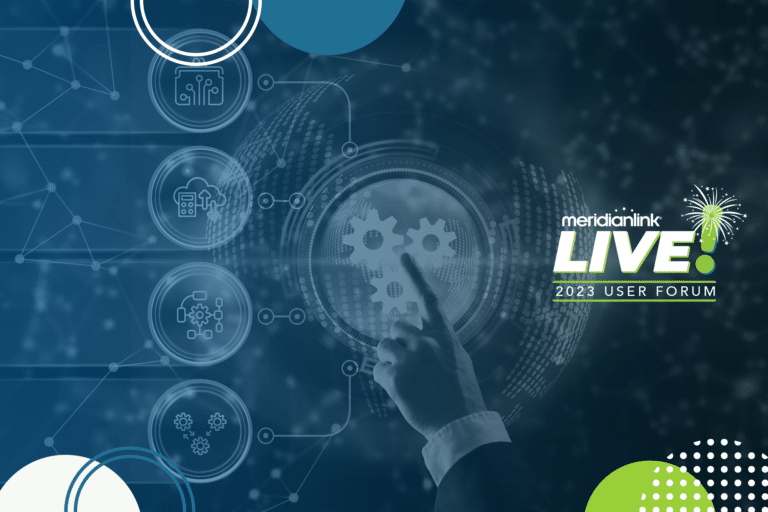The following post is part of a series of blogs written by MeridianLink® Partners who will be attending MeridianLink LIVE! To learn more about the event, click here.
In the ever-evolving landscape of lending, the intersection of human judgment and artificial intelligence (AI) has become a focal point. The coexistence and co-development of these two forces is all but an encouraging phenomenon that will steer consumer well-being to its center stage.
Unveiling the known unknowns
In a recent paper titled “Rise of Machines”, authors Mark Jansen, Hieu Nguyen, and Amin Shams delve into the impact of automation on consumer lending. Their randomized experiment, spanning 2 million loan applications across 40 states, yielded intriguing results that challenge traditional underwriting practices.
The findings are clear: machine-underwritten loans outperform their human-underwritten counterparts in several critical aspects:
- Profitability: Machine-underwritten loans boast a remarkable 10.2% increase in profitability. This isn’t just a marginal improvement; it’s a seismic shift that demands attention.
- Optimized pricing and offers: Machines optimized interest rate evaluations and streamlined offerings for the borrowers, unlike human-underwritten loans, which reflected personal biases and judgments.
- Reduced Default Rate: The default rate for machine-underwritten loans was 6.8% lower. This isn’t merely about numbers; it translates to fewer financial hardships for borrowers and more stability for lenders.
The authors offer two key explanations for their findings.
1. Agency conflicts
When humans make lending decisions, they often grapple with competing interests. Their judgment can be influenced by organizational pressures, personal incentives, or even subconscious biases. Machines, on the other hand, operate without ulterior motives. Their sole purpose is to optimize outcomes based on data.
2. Differential ability to handle complex data
Machines are significantly ahead of human minds in the capacity to analyze complex data. They churn through vast datasets effortlessly, extracting patterns and correlations that human minds might overlook. Their analyses are repeatable, reproducible, and devoid of fatigue. Imagine a multidimensional chessboard where machines explore countless dimensions concurrently while human minds are limited to the dimensions we can capture.
The Future: Human Touch Using AI
So, is this the end of human-driven decisioning? No, in fact, quite the contrary.
Human discretion remains invaluable in scenarios where there is a lack of data or where historical data does not sufficiently capture the details of the current situation (such as sudden income volatility due to a borrower’s personal situation). Here, human judgment can complement algorithms, bridging gaps that machines alone cannot. Besides, the efficiency gains due to machines allow humans to focus on the other important dimensions of customer service that need attention.
The future of underwriting lies in human-machine collaboration. Picture an AI-powered human-like consciousness—a symbiotic blend of data-driven precision and human empathy. Together, they can approve more loans faster while ensuring fairness and profitability. Financial inclusion becomes a reality, not just a buzzword.
The future also lies in ensuring that lenders adhere to all the regulatory guidelines and policies—policies that are supportive of financial technology and its development if consumer well-being is at the center. For example, The Consumer Financial Protection Bureau (CFPB) recently re-emphasized guidelines mandating lenders to provide clear, comprehensive explanations for decisions impacting consumers’ credit, moving beyond the standard reason codes provided by the CFPB. The flexibility inherent in the CFPB guidelines acknowledges AI’s ability to thoroughly assess a wide array of variables. It also recognizes AI’s potential to expand the scope of adverse action reasons beyond what has been traditionally done till now.
Early Days, Vast Potential
We are witnessing the dawn of a new era. AI’s potential in underwriting is far-reaching, and these are indeed early days. As we refine our algorithms, enhance transparency, and embrace the best of both worlds, the lending landscape will transform. So, let’s raise a virtual toast to the rise of machines—the architects of a more efficient, equitable lending ecosystem and to the human touch- that will continue to be invaluable for ages to come.
Author: Vinay Bhaskar, COO, Scienaptic AI






